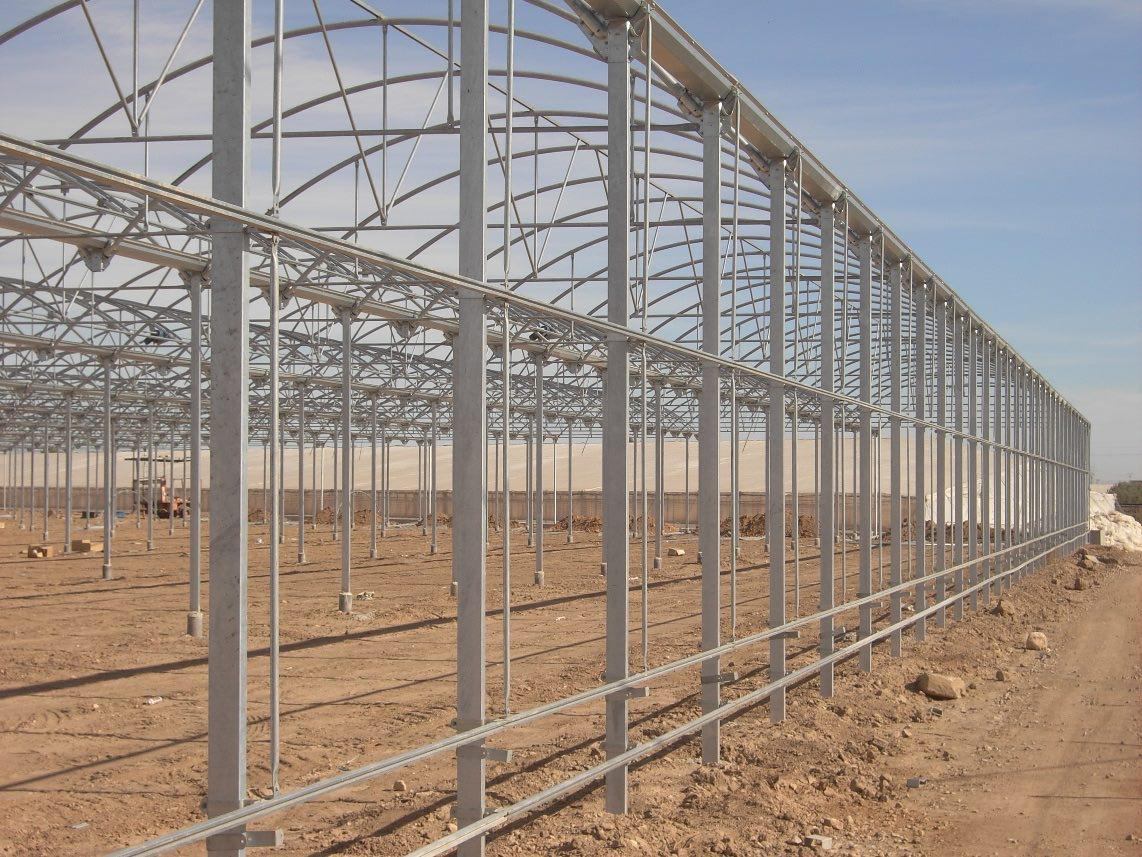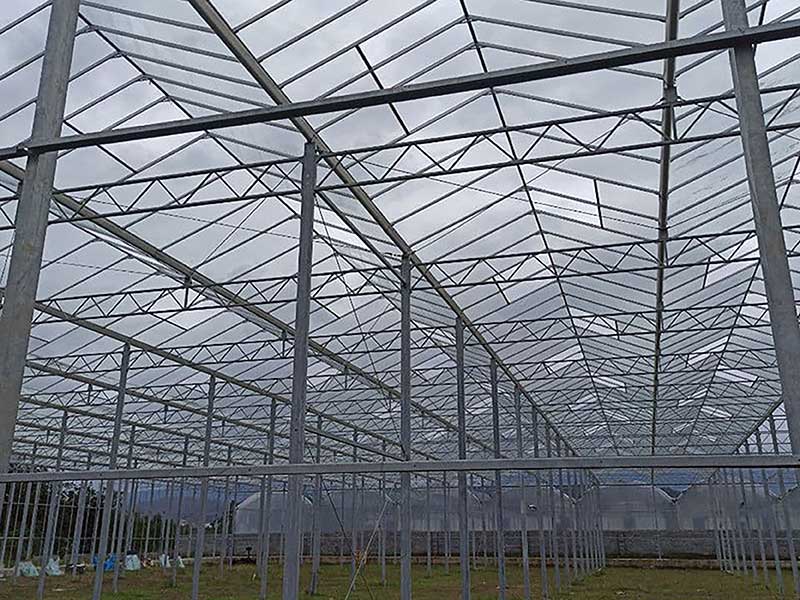Greenhouse training - choosing the construction site and the characteristics of the greenhouse structure (Part 2)
In the second part of the greenhouse training series, we have defined the greenhouse, the characteristics of the skeleton and structure, choosing the location of the greenhouse and its conditions and practical points.
Choosing the location of the greenhouse
Definition of greenhouse:
Limited space in which environmental factors such as light, temperature, humidity, soil texture, PH, EC, etc. can be controlled.Inside the greenhouse, plants can be grown all year round, especially outside the season, or a range of products can be matured, or we can grow the plant for the whole year or part of the year in certain climatic conditions. Keep, used
Choosing the location of the greenhouse
In choosing the location of the greenhouse, you should pay attention to the following:
1)The greenhouse should be close to water and electricity sources: Proximity to water and electricity sources, which is very effective in reducing initial costs. Water quality in terms of pH and EC should also be checked.
2)The greenhouse should be close to the market and the main road: Try to build the greenhouse as close to the market and the main road as possible.
3)Greenhouse land should have proper drainage: The greenhouse construction site should have deep and drained soil.
4)Greenhouse should not be in the shade: The construction site of the greenhouse should not be in the shade of a tree or building or high wall. In fact, the greenhouse should be built at a suitable distance from the trees, buildings and not near the mountains.
5) Proximity of the greenhouse to deciduous trees: In warm areas, the proximity of deciduous trees to the greenhouse reduces the intensity of heat inside the greenhouse in summer and with the fall of leaves in autumn and winter, the greenhouse will have enough light.
6) The greenhouse should not be in the path of stormy winds: The construction site of the greenhouse should be away from the path of strong winds and severe storms.
7) It is possible to develop the greenhouse: In choosing the land to build the greenhouse, the plot of land that is considered must be larger than the basic needs to be able to develop it in the future. There should also be space for the construction of an office building, storage room, cold storage, swimming pool, security room, parking lot and toilet. On average, the required area for the mentioned space is 10% of the greenhouse area.
8) Greenhouse land should be flat: The construction site of the greenhouse should be as flat as possible in terms of height and elevation (topography of the area) to reduce the cost of flattening the greenhouse land.
9) Proximity of the greenhouse to the gas pipeline: The construction site of the greenhouse is the determining factor of the type of fuel used in the greenhouse. In greenhouses away from gas pipelines, we have to use other energy sources such as diesel instead of gas.
10) Quality water should be available near the greenhouse: In the construction of industrial greenhouses, water is one of the factors that its quantity and quality are very important due to its widespread use. The presence of sodium, chlorine, bicarbonate ions as well as improper pH and EC reduce water quality and damage the plant and cause a drop in yield in the greenhouse.The use of municipal tap water (drinking water) in the greenhouse in areas where it is possible may be harmful to the plant due to the presence of fluoride, and the use of river water may also be pathogenic.Therefore, well water, if it has the right pH and EC in terms of quality, is the best option for use in the greenhouse.
Note: The minimum water required for 1000 square meters (1 acre) of the greenhouse, every day in summer and at the peak of consumption is 8 to 10 cubic meters. (About 8000 to 10000 liters)
Greenhouse skeleton characteristics
When choosing a greenhouse structure and how to build it, pay attention to the following points:
1- Greenhouse skeleton
The greenhouse skeleton consists of the part of the greenhouse that holds the plastic or other cover.
Characteristics of a good greenhouse skeleton:
- A) The structure of the greenhouse should be strong and light.
- B) The structure of the greenhouse should have little shading.
- C) The structure of the greenhouse must be cheap and durable.
- D) Greenhouse frame should be made of non-oxidizable metals or galvanized.
2- Construction of greenhouse skeleton
In choosing and determining the direction of construction of the greenhouse skeleton, 2 determining factors are:
A) Temperature wind of the area: The greenhouse should not be constructed perpendicular to the strong wind, the best case scenario is that the length of the greenhouse is approximately along the direction of the template wind of the greenhouse and has a slight deviation from it, otherwise there is a possibility of damage to the greenhouse Will have. Also, the position of the greenhouse skeleton vents should be against the direction of the prevailing wind in the area.
B) Greenhouse light: If the area is not windy and wind is not a limiting factor, the direction of the greenhouse is important in terms of reducing shading and having the maximum intensity of sunlight because the greenhouse skeleton casts its shadow on the plants inside the greenhouse.In single-unit greenhouses, in latitudes below 40 degrees, the direction of the greenhouse is north-south, and in latitudes above 40 degrees, the direction of the greenhouse is east-west.
3- Using bolt and nut connections in making the greenhouse skeleton
In the construction of the greenhouse frame, bolt and nut connections should be used as much as possible and welding of parts should be avoided because welding destroys the stainless coating and the heated parts become rusty and over time in They cause fractures.
4- Longitudinal slope of the greenhouse skeleton
During the greenhouse, a slope of 1% should be considered for rainwater and snow. 1% means to have a slope of 1 meter for every 100 meters.
There are two ways to create a 1% slope:
Method 1: We create a slope of 1% by changing the depth of the foundations. It is recommended to use this method due to the same height of all columns.
Method 2: You can work the foundations all at one depth and consider the height of the columns more or less.
Note: The weight of snow should not be placed on the greenhouse skeleton. In cultivated greenhouses, due to the heating system being turned on, the snow on the roof of the greenhouse melts quickly and comes out through the gutters on the roof of the greenhouse.
If there is no cultivation in the greenhouse, be sure to turn on the heating systems when it is snowing, so that the snow melts quickly, otherwise the weight created by the snow may damage the greenhouse.


